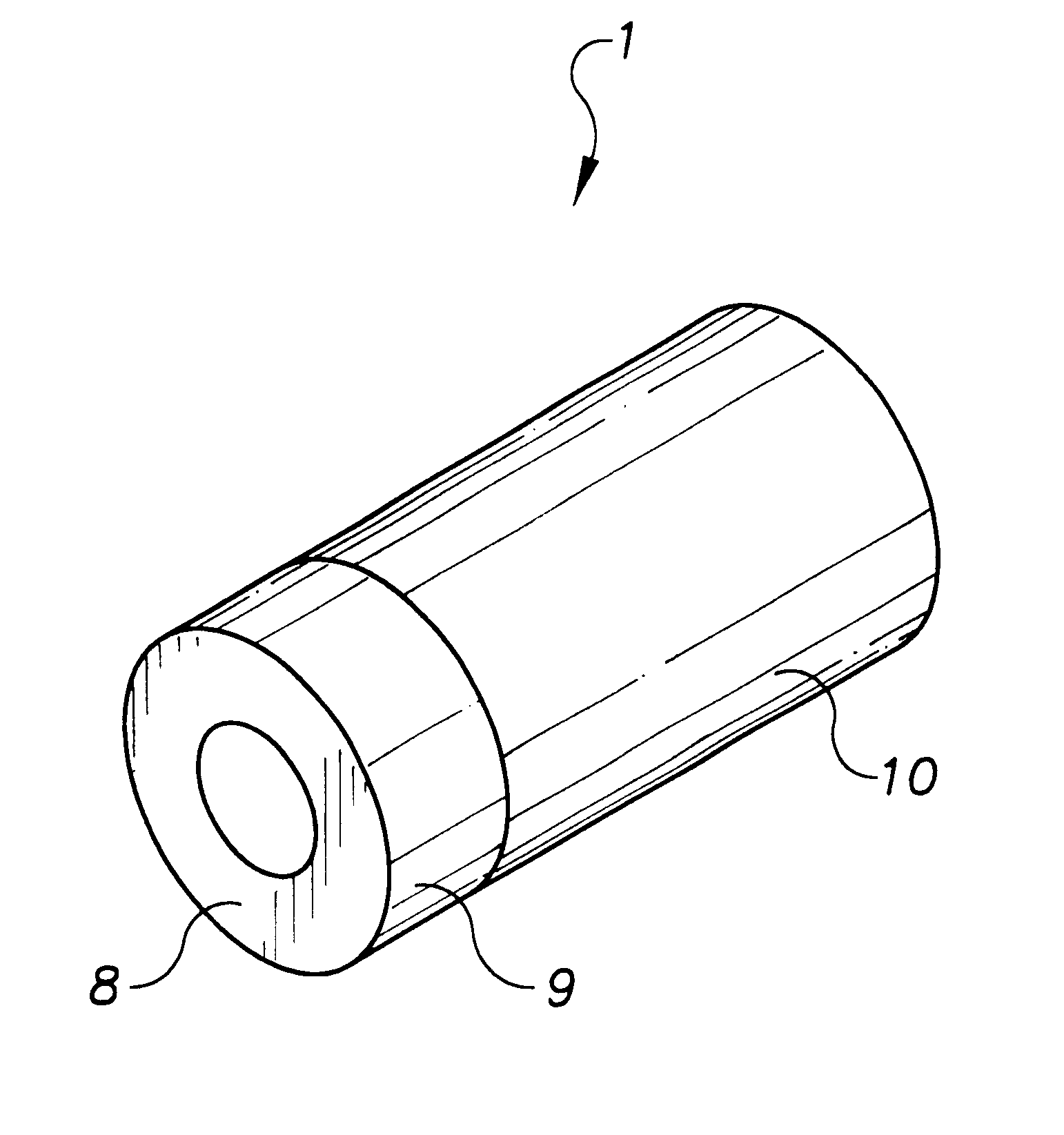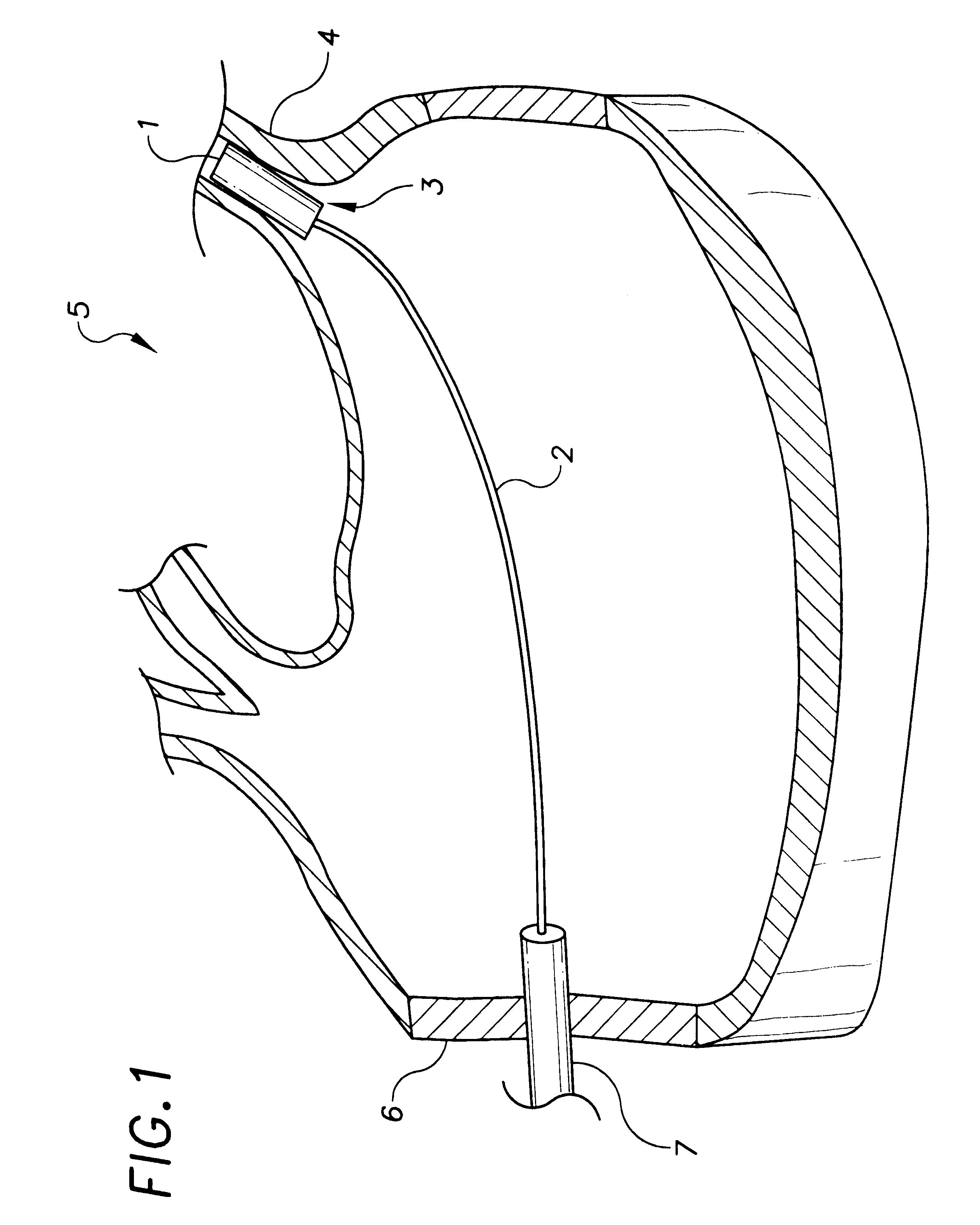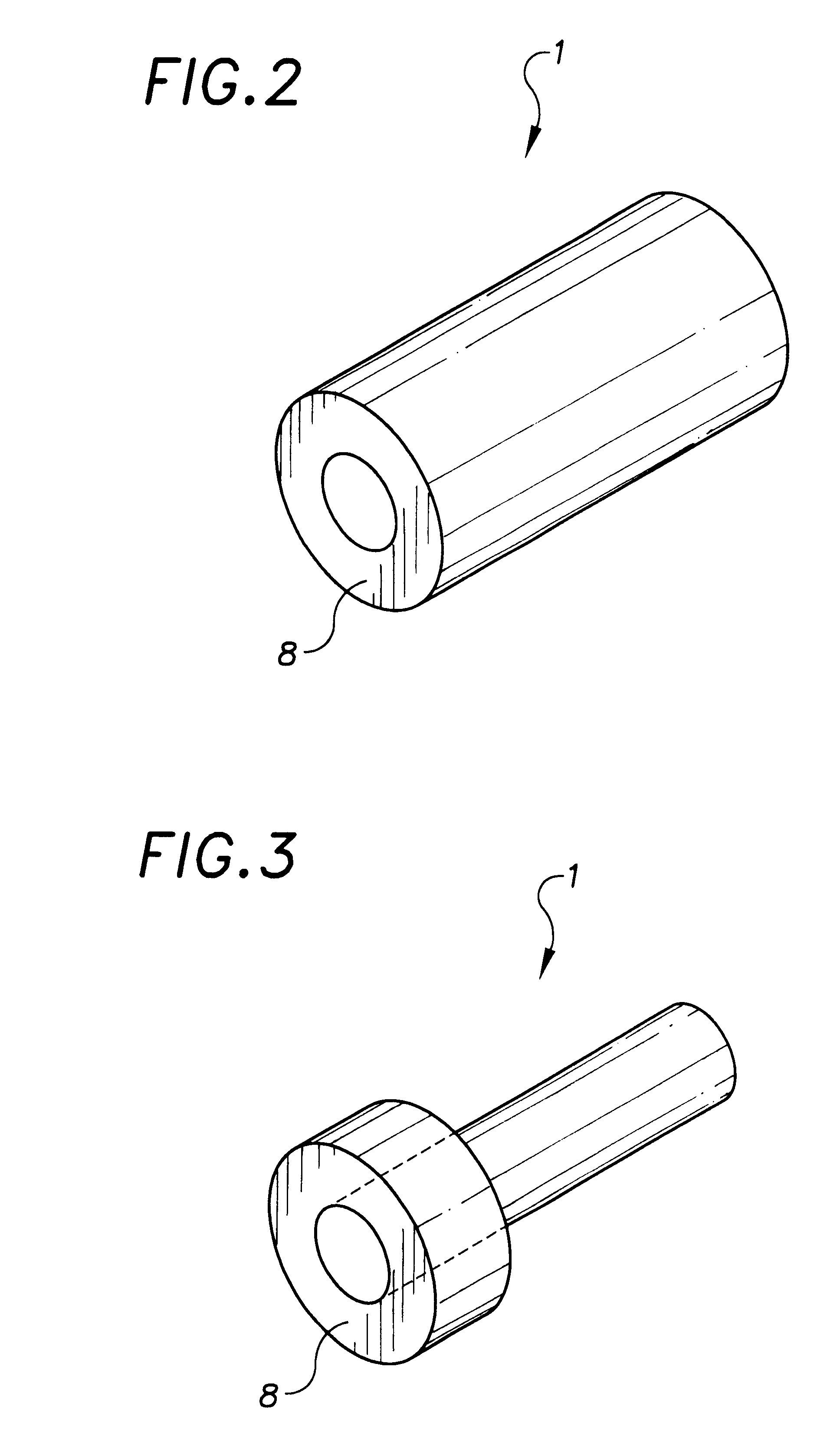Pulmonary vein stent and method for use
- Summary
- Abstract
- Description
- Claims
- Application Information
AI Technical Summary
Problems solved by technology
Method used
Image
Examples
Embodiment Construction
In FIG. 1 the stent 1 has been deployed, by the catheter 2, into the ostium 3 of the target pulmonary vein 4. The stent alone acts to isolate the electrical impulses of the pulmonary veins from the atrial conduction tissue. The stent, endoprosthesis or circuit interrupting structure is placed into the ostium of the target pulmonary veins. The term "stent" is being used in its broad sense as is meant to encompass a stent, endoprosthesis or a circuit interrupting structure. The stent, when fabricated of a material with desirable electrical properties (for example, metal, which has a low resistivity) may comprise the circuit interrupting structure. To place the stent in the target pulmonary vein, access to the left atrium 5 is first gained by percutaneous insertion of a catheter into the left atrium. To accomplish this, a needle catheter is placed through the venous system into the right atrium, and then penetrates the fossa ovalis 6 (the atrial septum) to gain access to the left atriu...
PUM
| Property | Measurement | Unit |
|---|---|---|
| Impermeability | aaaaa | aaaaa |
Abstract
Description
Claims
Application Information
 Login to View More
Login to View More - R&D
- Intellectual Property
- Life Sciences
- Materials
- Tech Scout
- Unparalleled Data Quality
- Higher Quality Content
- 60% Fewer Hallucinations
Browse by: Latest US Patents, China's latest patents, Technical Efficacy Thesaurus, Application Domain, Technology Topic, Popular Technical Reports.
© 2025 PatSnap. All rights reserved.Legal|Privacy policy|Modern Slavery Act Transparency Statement|Sitemap|About US| Contact US: help@patsnap.com



